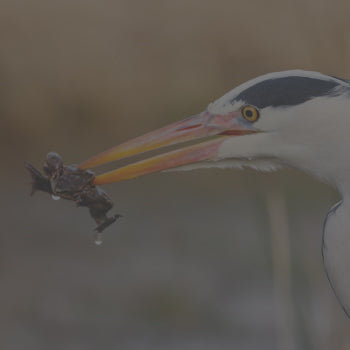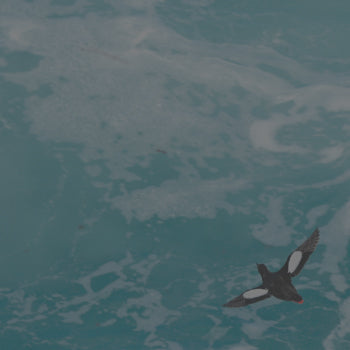The Scottish Ornithologists' Club (SOC) was established by a group of Scottish ornithologists who met together in the rooms of the Royal Scottish Geographical Society in Edinburgh on 24th March 1936.
SOC's Aims
- To promote the study, recording and documentation of Scotland’s birdlife
- To support the conservation of wild birds and their habitats throughout Scotland
- To promote an interest in our wild birds
- To provide a focus for anyone with an interest in, and for more information relating to, the study of birds in Scotland
- To promote the arts of natural history
On the face of it, a birdwatching club
The SOC exists to promote the study, enjoyment and conservation of wild birds and their habitats across Scotland. On the face of it, the SOC is a birdwatching club with 15 local branches across the country and a growing membership of over 3000. We bring together like-minded individuals with a passion for birds, nature and conservation, through a programme of talks, outings, conferences and via the Club's quarterly members' journal, Scottish Birds. We are heavily dependent on keen volunteers and the support of our membership.
Our bread and butter, recording birds
On the other hand, we're a network of volunteers across Scotland, gathering vital, impartial information about our country's wild birds. The SOC acts as the umbrella organisation for bird recording in Scotland, managing the network of recording birds in Scotland, or the Local Recorders' Network and the Scottish Birds Records Committee, the latter of which maintains the official Scottish List on behalf of the Club. The database of information Local Recorders collect is an extremely important archive of local bird information – a critical tool for their future conservation.
Why do we do this?
Many people consider birds to be the litmus paper test for the health of the environment. By recording which species we’ve seen, when and where and how many we saw, scientists can gain a greater understanding of the effects that pollution, habitat loss, climate change and modern farming methods are having on our wild birds. The data that SOC volunteers collect and collate is made available to organisations such as RSPB and is one of the first points of reference in informed conservation planning. It is also available to conservationists, planners and developers.
Advancing ornithological research and conservation
The Club operates two grant schemes; the Endowment Fund provides finance for the field study of Scottish birds, and The Birds of Scotland Fund is used to support ornithological publications and special projects. We’ve financed research into everything from Tree Sparrow counts and a Capercaillie census, to beached bird surveys. Take a look at our surveys page to find out about the wide range of conservation projects we’ve helped support.
The SOC is committed to sharing biodiversity data
We work with partnership organisations to promote the practice of keeping bird records and submitting them for scientific research. Find out more about our involvement in BirdTrack, the online recording system which looks at the migration patterns and distributions of birds throughout Britain and Ireland.
Resource centre
Club Headquarters are at Waterston House, in Aberlady, where a small team of paid staff and group of dedicated volunteers facilitate the day to day running of the SOC, processing new membership applications, fielding enquiries, coordinating special birdwatching events like the SOC Annual Conference, and administering funding applications.
Headquarters supports the multitude of volunteers around the country who are the very essence of the Club - running the local branches, gathering vital bird records out in the field, assimilating data, producing the quarterly members’ journal, Scottish Birds, and compiling regional bird reports.
To the general public, Waterston House is a birdwatching resource centre and is a must visit for any birdwatcher in the area and the perfect place to visit if you’re new to birdwatching and looking to get started. A recent sightings board, tide tables and friendly staff and volunteers are on hand to help you make the most of your visit.
The centre also houses the George Waterston Library, the largest ornithological library in Scotland which is open to all for reference with the added bonus to members of being able to borrow books. There is also an archive of historically important archives available to browse. Waterston House is also a well-known events venue and wildlife art gallery.
Developing and supporting young birdwatchers
The SOC is in the privileged position of having a membership composed of skilled ornithologists, scientists, educators and creatives, working within a wide range of industries and fields. In recent years particularly, the Club has sought to explore ways in which this wealth of knowledge and expertise can be passed on to ensure that there will be a future generation of naturalists recording, conserving and speaking up for our country’s birds. Much of the Club’s development work centres around supporting, encouraging and developing young naturalists which the SOC aims to do via a variety of ways, such as through training courses, subsidising young people's places at the Annual Conference, offering discounted membership, supporting mentoring opportunities and much more.






